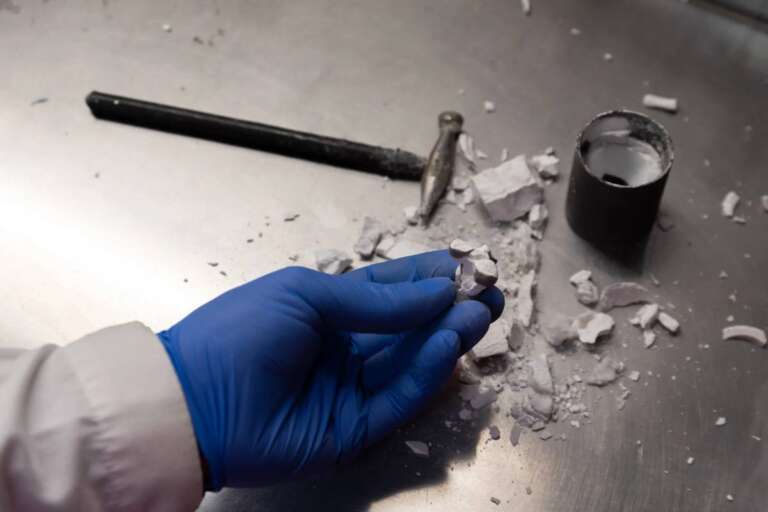The lower back is a vital part of the body that supports much of our weight and enables a wide range of movements, from bending and twisting to lifting and standing upright.
Despite its importance, many people experience weakness or pain in this area, which can limit mobility and affect daily life.
Understanding the causes of weak lower back muscles and learning how to effectively strengthen them are key steps toward improving your back health and preventing future problems.
In this article, we’ll explore what leads to lower back weakness, how to treat it, and practical ways to build a stronger, more resilient lower back.
What Causes Weak Lower Back Muscles?
Before we explore how to strengthen your lower back, it’s important to understand why these muscles become weak in the first place. Several factors contribute to lower back muscle weakness:
1. Sedentary Lifestyle
Spending long hours sitting at a desk, in a car, or on the couch causes the muscles in the lower back to become deconditioned. Lack of movement means these muscles aren’t engaged regularly and begin to weaken over time.
2. Poor Posture
Slouching or hunching forward while sitting or standing puts unnecessary strain on the lower back muscles, leading to muscle imbalance and weakness.
3. Muscle Imbalance
When the abdominal muscles are much stronger than the back muscles, or vice versa, this imbalance can stress the lower back and cause weakness.
4. Injury or Trauma
A back injury, such as a strain or sprain, can damage the muscles or surrounding tissues, leading to low back pain and weakness during the healing process.
5. Aging
As we age, muscle mass naturally declines unless maintained by regular exercise, which can cause weakness in the lower back muscles.
6. Medical Conditions
Conditions like herniated discs, spinal stenosis, or degenerative disc disease can weaken the lower back muscles due to pain and reduced mobility.
7. Excess Weight
Carrying extra body weight adds stress to the spine and lower back muscles, causing fatigue and weakening over time.
How Do You Treat a Weak Lower Back?
Treating a weak lower back typically involves a combination of rest, targeted exercise, lifestyle modifications, and sometimes medical intervention. Here are effective ways to treat weak lower back muscles:
1. Physical Therapy and Targeted Exercises
A physical therapist can design a personalized program to strengthen your lower back muscles safely. These exercises typically focus on:
- Core strengthening: Building the muscles around your abdomen to support the lower back.
- Lower back-specific exercises: Targeting the erector spinae and multifidus muscles.
- Flexibility and stretching: To improve mobility and reduce stiffness.
Common exercises include bird-dogs, bridges, pelvic tilts, and superman poses.
2. Correct Posture and Ergonomics
Improving your posture during daily activities and adjusting your workstation can reduce strain on your lower back. Ergonomic chairs and lumbar supports can help maintain the natural curve of your spine.
3. Gradual Increase in Activity
Avoid sudden intense physical activity after a period of inactivity. Gradually increasing your activity levels helps rebuild muscle strength without causing injury.
4. Weight Management
Maintaining a healthy weight reduces the stress on your lower back muscles and spine.
5. Pain Management
Over-the-counter pain relievers or anti-inflammatory medications can help reduce pain and swelling during the healing process. In some cases, a doctor might recommend stronger medications or injections.
6. Heat and Cold Therapy
Applying heat can relax muscles and improve blood flow, while cold packs can reduce inflammation and numb pain.
7. Massage and Manual Therapy
Massage can relieve muscle tension and improve circulation, helping weak muscles recover.
8. Medical Evaluation
If weakness persists or is accompanied by severe pain, numbness, or tingling, seek medical advice. Imaging tests or specialist consultations may be necessary to rule out underlying conditions.
How Do I Make My Lower Back Stronger?
Strengthening the lower back requires consistent effort, focusing on exercise, lifestyle changes, and preventive care. Here’s a step-by-step guide:
1. Incorporate Lower Back Strengthening Exercises
Start with gentle, low-impact exercises that focus on the muscles of your lower back and core:
- Pelvic Tilts: Lie on your back with knees bent, flatten your lower back against the floor by tightening your abdominal muscles, hold for a few seconds, and release.
- Bridges: Lie on your back with knees bent, lift your hips toward the ceiling while squeezing your glutes and lower back muscles, then slowly lower back down.
- Bird-Dogs: On hands and knees, extend one arm forward and the opposite leg back, hold, then switch sides.
- Superman: Lie face down and simultaneously lift your arms, chest, and legs off the floor, hold, then lower down.
- Cat-Cow Stretch: On hands and knees, alternate between arching your back upwards (cat) and lowering your belly while lifting your head and tailbone (cow).
Aim to do these exercises 3-4 times a week. Start slow and increase repetitions as you get stronger.
2. Strengthen Your Core
Your abdominal muscles play a key role in supporting your lower back. Add exercises such as:
- Planks (front and side)
- Dead bugs
- Abdominal crunches (with caution and proper form)
3. Improve Flexibility
Tight muscles in the hamstrings, hips, and lower back can contribute to weakness and pain. Incorporate stretches such as:
- Hamstring stretch
- Hip flexor stretch
- Child’s pose
- Lower back twists
4. Practice Good Posture Daily
Be mindful of your posture when sitting, standing, and moving. Use ergonomic chairs and adjust your computer screen to eye level to avoid slouching.
5. Stay Active
Incorporate regular aerobic activities such as walking, swimming, or cycling. These help improve blood flow, promote healing, and maintain overall muscle health.
6. Avoid Prolonged Sitting
Take breaks every 30-60 minutes to stand up, stretch, and move around. This reduces stiffness and keeps your muscles engaged.
7. Maintain a Healthy Weight
If you are overweight, losing excess weight will reduce strain on your lower back.
8. Use Proper Lifting Techniques
When lifting heavy objects, bend at the knees and hips rather than the waist. Keep the object close to your body and avoid twisting motions.
9. Use Reformer Pilates (Body with Reformer)
Reformer Pilates strengthens lower back muscles with controlled movements focusing on core stability, muscle balance, and flexibility.
Using springs and pulleys, it targets deep back and abdominal muscles safely. It helps improve posture, reduce pain, and build a strong back. Taking classes with a trained instructor is recommended.
When to See a Doctor?
If you experience:
- Severe or persistent lower back pain
- Weakness or numbness in your legs
- Difficulty controlling bladder or bowel functions
- Pain after trauma or injury
Seek medical attention immediately. These symptoms may indicate serious underlying conditions requiring prompt treatment.
Conclusion
A strong lower back is essential for everyday functioning and overall health. Weak lower back muscles often result from inactivity, poor posture, injury, or aging.
The good news is that through a combination of targeted exercises, posture correction, weight management, and lifestyle adjustments, you can strengthen your lower back effectively.
Remember to start slow, be consistent, and listen to your body. If pain or weakness persists, consult a healthcare professional for a tailored treatment plan.
With dedication, you can build a resilient lower back that supports your daily activities and improves your quality of life.








Leave a Comment